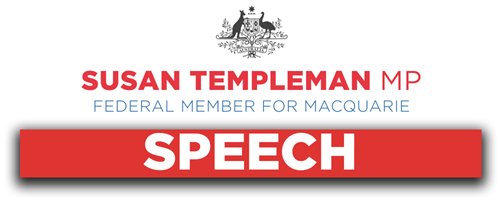
Mobile Blackspot Program
As I drive the 35 minutes from my home to my office, there are three places that I know my mobile phone will drop out and, depending on the weather, another couple where it might. This is the reality for anyone who drives through the electorate of Macquarie, which encompasses the Blue Mountains and the Hawkesbury. We are not a regional area; we're a peri-urban area, 60-odd kays from the CBD, yet our coverage is appalling, and I have to say that the coalition's blackspot program has been disappointing for my electorate, to say the least. There are already 72 registered mobile blackspots for the Blue Mountains and the Hawkesbury, and only eight have been funded by the coalition.
As the government announced round 4 of the program, a recent ABC investigation found that almost one in six of the towers funded in round 1 of the program is not even operational. That's certainly the case in Macquarie where towers promised years ago—in St Albans, Grose Vale and Megalong Valley—aren't operational and construction of Yellow Rock hasn't even started. It's not the promised mobile phone towers that are the biggest worry, it's all the places that have been ignored. One of the places with no mobile signal is the Tennyson rural fire station. Here we have a state-of-the-art fire station but not a bar of mobile reception.
I'd ask the government: if you are not going to prioritise emergency services, what is your criteria? Wait a minute—we do know the answer to that. The criteria is whether you're a Liberal or National Party seat. That's what gets you to the top of the priority list, not an independent criteria to determine the priorities for communities around this country. There should be one process for all MPs to submit their list of black spots, not an in-tray for government MPs and an 'ignore tray' for non-government MPs.
The problems with a lack of mobile signal are exacerbated in a region like mine, where bushfires are a feature of every single summer. It's compounded by the installation of fibre to the node NBN. What will happen when the power goes down is that there will be hundreds of people who will have absolutely no communication—no mobile signal because they just don't have a mobile signal, and no landline because that's been taken away, and the power will go down on the fibre to the node and they'll have absolutely nothing.
Even in my own home, which is only a few metres from a major road, we don't get a mobile signal. I connect through my ADSL into my wi-fi, so when there's power I switch to that. But when the power goes down, even somewhere in a densely populated area, we get absolutely nothing. When FTTC comes in, that means entire streets through Winmalee right across the lower mountains, Mount Riverview—every suburb has black spots in the lower Blue Mountains, and FTTC won't help. These are the pragmatic realities we're going to face. We are in an area where we know we get bushfires, and when we do we know how important it is to communicate. I spend a lot of time communicating by landline with my son and, unfortunately, what we've found is mobile signals have deteriorated over the last few years. So people who had a signal a few years ago are finding that it isn't nearly as good.
Labor will prioritise community and emergency services needs over political objectives. The government said it would do that but it has not happened. We certainly won't be building sites like the coalition has that were going to be built anyway. Eighty per cent of the sites that were built went to coalition seats. That does not reflect the need. As to where this new money, the $25 million, has come from, it's the under-spend from the previous rounds. It is not new money. So I think it's about time people were pret
re pret

